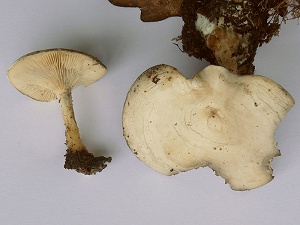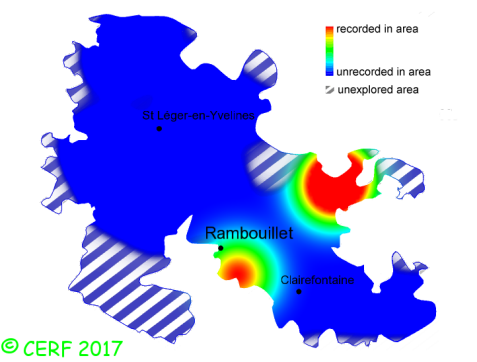| Rhodocybe mundula (Lasch) Singer |
|
|
|
|
|
|
The cap is whitish to pale grey to beige, with darker centre, flat then depressed, slightly umbonate; its margin is smooth or wavy. The cap surface is arranged in faint concentric bands of wrinkles or cracks, not viscid nor sticky. The stem is same colour as cap, pruinose, without ring. The flesh is white, turning red or black when exposed to air; its taste is bitter; the odour is fruity or of rancid meal; its texture is fibrous. The gills are grey then blackish, blackening when pressed, adnate, crowded . The spore print is pink. This species is saprophytic. It grows on the ground, in broad-leaved and also coniferous woods, grassland, on a rather calcareous soil. The fruiting period takes place from July to November.
Chemical tests : flesh or cuticle becomes reddish brown in presence of potassium hydroxide (KOH). Distinctive features : concentrically wrinkled; white to grey cap, with black spots; gills darkening when pressed; looks like a Miller (Clitopilus prunulus) but blackening and with bitter taste Rhodocybe mundula is quite rare and localised in the forest of Rambouillet, and is quite rare, more generally speaking . | ||
|
page updated on 14/01/18

